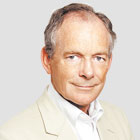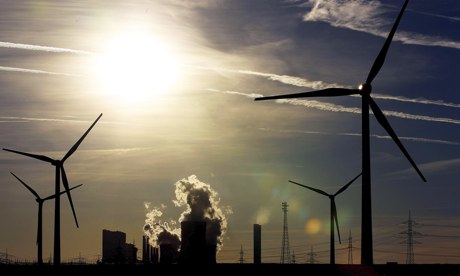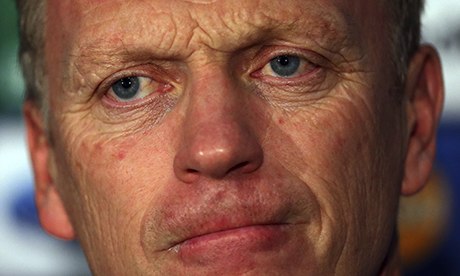Brahma Chellaney in The Hindu
Like al-Qaeda, the Islamic State has been inadvertently spawned by the policies of those now in the lead to combat it. But will anything substantive be learned from this experience?
U.S. President Barack Obama has labelled the jihadist juggernaut that calls itself the Islamic State a “cancer,” while his Defence Secretary, Chuck Hagel, has called it more dangerous than al-Qaeda ever was, claiming that its threat is “beyond anything we’ve seen.” No monster has ever been born on its own. So the question is: which forces helped create this new Frankenstein?
The Islamic State is a brutal, medieval organisation whose members take pride in carrying out beheadings and flaunting the severed heads of their victims as trophies. This cannot obscure an underlying reality: the Islamic State represents a Sunni Islamist insurrection against non-Sunni rulers in disintegrating Syria and Iraq.
Indeed, the ongoing fragmentation of states along primordial lines in the arc between Israel and India is spawning de facto new entities or blocks, including Shiastan, Wahhabistan, Kurdistan, ISstan and Talibanstan. Other than Iran, Egypt and Turkey, most of the important nations from the Maghreb to Pakistan (an internally torn state that could shrink to Punjabistan or, simply, ISIstan) are modern western concoctions, with no roots in history or pre-existing identity.
The West and agendas
It is beyond dispute that the Islamic State militia — formerly the Islamic State of Iraq and the Levant — emerged from the Syrian civil war, which began indigenously as a localised revolt against state brutality under Syrian President Bashar al-Assad before being fuelled with externally supplied funds and weapons. From Central Intelligence Agency (CIA)-training centres in Turkey and Jordan, the rebels set up a Free Syrian Army (FSA), launching attacks on government forces, as a U.S.-backed information war demonised Mr. Assad and encouraged military officers and soldiers to switch sides.
It is beyond dispute that the Islamic State militia — formerly the Islamic State of Iraq and the Levant — emerged from the Syrian civil war, which began indigenously as a localised revolt against state brutality under Syrian President Bashar al-Assad before being fuelled with externally supplied funds and weapons. From Central Intelligence Agency (CIA)-training centres in Turkey and Jordan, the rebels set up a Free Syrian Army (FSA), launching attacks on government forces, as a U.S.-backed information war demonised Mr. Assad and encouraged military officers and soldiers to switch sides.
 “By seeking to topple a secular autocracy in Syria while simultaneously working to shield jihad-bankrolling monarchies from the Arab Spring, Barack Obama ended up strengthening Islamist forces.”
“By seeking to topple a secular autocracy in Syria while simultaneously working to shield jihad-bankrolling monarchies from the Arab Spring, Barack Obama ended up strengthening Islamist forces.” 
But the members of the U.S.-led coalition were never on the same page because some allies had dual agendas. While the three spearheads of the anti-Assad crusade — the U.S., Britain and France — focussed on aiding the FSA, the radical Islamist sheikhdoms such as Saudi Arabia, Qatar, Kuwait and the United Arab Emirates as well as the Islamist-leaning government in Turkey channelled their weapons and funds to more overtly Islamist groups. This splintered the Syrian opposition, marginalising the FSA and paving the way for the Islamic State’s rise.
The anti-Assad coalition indeed started off on the wrong foot by trying to speciously distinguish between “moderate” and “radical” jihadists. The line separating the two is just too blurred. Indeed, the term “moderatejihadists” is an oxymoron: Those waging jihad by the gun can never be moderate.
Invoking jihad
The U.S. and its allies made a more fundamental mistake by infusing the spirit of jihad in their campaign against Mr. Assad so as to help trigger a popular uprising in Syria. The decision to instil the spirit of jihad through television and radio broadcasts beamed to Syrians was deliberate — to provoke Syria’s majority Sunni population to rise against their secular government.
The U.S. and its allies made a more fundamental mistake by infusing the spirit of jihad in their campaign against Mr. Assad so as to help trigger a popular uprising in Syria. The decision to instil the spirit of jihad through television and radio broadcasts beamed to Syrians was deliberate — to provoke Syria’s majority Sunni population to rise against their secular government.
This ignored the lesson from Afghanistan (where the CIA in the 1980s ran, via Pakistan, the largest covert operation in its history) — that inciting jihad and arming “holy warriors” creates a deadly cocktail, with far-reaching and long-lasting impacts on international security. The Reagan administration openly used Islam as an ideological tool to spur armed resistance to Soviet forces in Afghanistan.
In 1985, at a White House ceremony in honour of several Afghan mujahideen — the jihadists out of which al-Qaeda evolved — President Ronald Reagan declared, “These gentlemen are the moral equivalent of America’s Founding Fathers.” Earlier in 1982, Reagan dedicated the space shuttle ‘Columbia’ to the Afghan resistance. He declared, “Just as the Columbia, we think, represents man’s finest aspirations in the field of science and technology, so too does the struggle of the Afghan people represent man’s highest aspirations for freedom. I am dedicating, on behalf of the American people, the March 22 launch of the Columbia to the people of Afghanistan.”
The Afghan war veterans came to haunt the security of many countries. Less known is the fact that the Islamic State’s self-declared caliph, Abu Bakr al-Baghdadi — like Libyan militia leader Abdelhakim Belhadj (whom the CIA abducted and subjected to “extraordinary rendition”) and Chechen terrorist leader Airat Vakhitov — become radicalised while under U.S. detention. As torture chambers, U.S. detention centres have served as pressure cookers for extremism.
Mr. Obama’s Syria strategy took a page out of Reagan’s Afghan playbook. Not surprisingly, his strategy backfired. It took just two years for Syria to descend into a Somalia-style failed state under the weight of the international jihad against Mr. Assad. This helped the Islamic State not only to rise but also to use its control over northeastern Syria to stage a surprise blitzkrieg deep into Iraq this summer.
Had the U.S. and its allies refrained from arming jihadists to topple Mr. Assad, would the Islamic State have emerged as a lethal, marauding force? And would large swaths of upstream territory along the Euphrates and the Tigris rivers in Syria and Iraq have fallen into this monster’s control? The exigencies of the topple-Assad campaign also prompted the Obama administration to turn a blind eye to the flow of Gulf and Turkish aid to the Islamic State.
In fact, the Obama team, until recently, viewed the Islamic State as a “good” terrorist organisation in Syria but a “bad” one in Iraq, especially when it threatened to overrun the Kurdish regional capital, Erbil. In January, Mr. Obama famously dismissed the Islamic State as a local “JV team” trying to imitate al-Qaeda but without the capacity to be a threat to America. It was only after the public outrage in the U.S. over the video-recorded execution of American journalist James Foley and the flight of Iraqi Christians and Yazidis that the White House re-evaluated the threat posed by the Islamic State.
Full circle
Many had cautioned against the topple-Assad campaign, fearing that extremist forces would gain control in the vacuum. Those still wedded to overthrowing Mr. Assad’s rule, however, contend that Mr. Obama’s failure to provide greater aid, including surface-to-air missiles, to the Syrian rebels created a vacuum that produced the Islamic State. In truth, more CIA arms to the increasingly ineffectual FSA would have meant a stronger and more deadly Islamic State.
Many had cautioned against the topple-Assad campaign, fearing that extremist forces would gain control in the vacuum. Those still wedded to overthrowing Mr. Assad’s rule, however, contend that Mr. Obama’s failure to provide greater aid, including surface-to-air missiles, to the Syrian rebels created a vacuum that produced the Islamic State. In truth, more CIA arms to the increasingly ineffectual FSA would have meant a stronger and more deadly Islamic State.
As part of his strategic calculus to oust Mr. Assad, Mr. Obama failed to capitalise on the Arab Spring, which was then in full bloom. By seeking to topple a secular autocracy in Syria while simultaneously working to shield jihad-bankrolling monarchies from the Arab Spring, he ended up strengthening Islamist forces — a development reinforced by the U.S.-led overthrow of another secular Arab dictator, Muammar Qadhafi, which has turned Libya into another failed state and created a lawless jihadist citadel at Europe’s southern doorstep.
In fact, no sooner had Qadhafi been killed than Libya’s new rulers established a theocracy, with no opposition from the western powers that brought about the regime change. Indeed, the cloak of Islam helps to protect the credibility of leaders who might otherwise be seen as foreign puppets. For the same reason, the U.S. has condoned the Arab monarchs for their long-standing alliance with Islamists. It has failed to stop these cloistered royals from continuing to fund Muslim extremist groups and madrasas in other countries. The American interest in maintaining pliant regimes in oil-rich countries has trumped all other considerations.
Today, Mr. Obama’s Syria policy is coming full circle. Having portrayed Mr. Assad as a bloodthirsty monster, Washington must now accept Mr. Assad as the lesser of the two evils and work with him to defeat the larger threat of the Islamic State.
The fact that the Islamic State’s heartland remains in northern Syria means that it cannot be stopped unless the U.S. extends air strikes into Syria. As the U.S. mulls that option — for which it would need at least tacit permission from Syria, which still maintains good air defences — it is fearful of being pulled into the middle of the horrendous civil war there. It is thus discreetly urging Mr. Assad to prioritise defeating the Islamic State.
Make no mistake: like al-Qaeda, the Islamic State is a monster inadvertently spawned by the policies of those now in the lead to combat it. The question is whether anything substantive will be learned from this experience, unlike the forgotten lessons of America’s anti-Soviet struggle in Afghanistan.
At a time when jihadist groups are gaining ground from Mali to Malaysia, Mr. Obama’s current effort to strike a Faustian bargain with the Afghan Taliban, for example, gives little hope that any lesson will be learned. U.S.-led policies toward the Islamic world have prevented a clash between civilisations by fostering a clash within a civilisation, but at serious cost to regional and international security.



